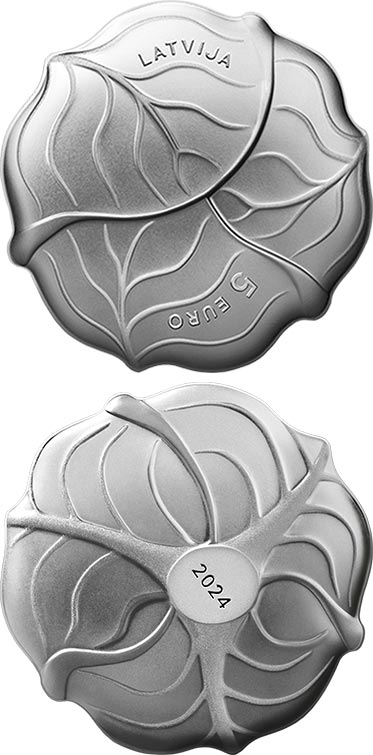5 euro - Cabbage
Series: Latvia - Silver 5 euro coins

Cabbage is a vegetable that holds significant symbolic meaning. It reached the territory that is now Latvia between the 11th and 13th centuries through multiple routes and soon became one of the main vegetables used in our ancestors' cooking. In ancient Greece and Rome, cabbage was believed to have healing properties and was valued as a highly beneficial plant. According to ancient Roman mythology, the chief god Jupiter broke into a sweat as he struggled to interpret an oracle's prophecy. The god's perspiration fell to earth and turned into cabbage heads. The Romans referred to this vegetable as caput (head). So, "cabbage head" essentially means a "head of heads" as the word "cabbage" can be traced back to the Latin caput.
The green cabbage leaves are associated with the green of banknotes. Furthermore, the word "cabbage" is sometimes used as a metaphor for large sums of money or wealth. On 26 July, the day of Anna, Latvians exchanged cabbage leaves as gifts believing that doing so would increase their wealth. Folk wisdom has it that fermented cabbage or sauerkraut heated nine times transforms into meat. It was believed that eating cabbage enhances fertility, a notion only a step away from the myth that babies are found or born in cabbages.
On the New Year's Eve, Latvians traditionally eat sauerkraut for the year's "sour" moments or failures to leave no trace. Cabbage leaves are also used in traditional medicine where they are applied to the sick part of the body. Turn it however you want – cabbages bring wealth, health, and offspring. May cabbages multiply!